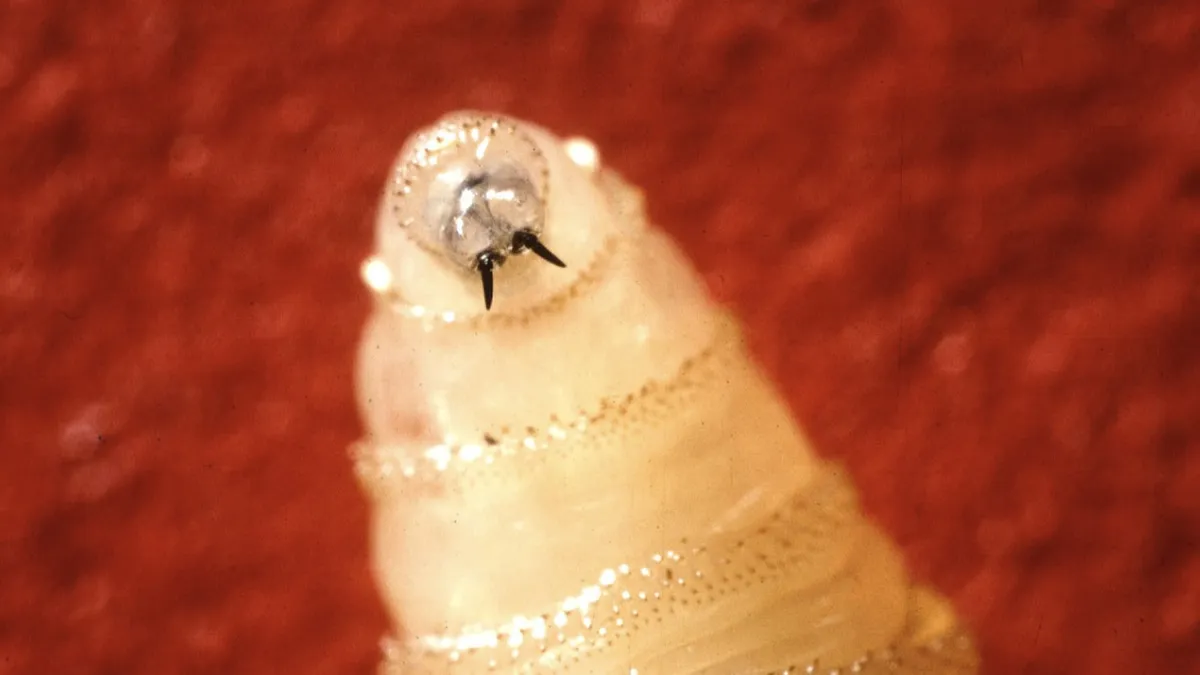
The U.S. Centers for Disease Control and Prevention (CDC) has confirmed the first human case of the New World screwworm, a dangerous flesh-eating parasite. This alarming confirmation, which has heightened concerns within the cattle industry, was reported on August 4 and involves a Maryland resident who had recently traveled to El Salvador. The case was confirmed in coordination with the Maryland Department of Health, as reported by NPR.
According to Andrew Nixon, a spokesperson for the Department of Health and Human Services, this incident marks the first human case of travel-associated New World screwworm myiasis identified in the United States from an outbreak-affected region. Fortunately, the risk to public health remains very low, and the affected individual has since recovered from the infestation. David McAllister from the Maryland Department of Health emphasized that there is no evidence of transmission to other individuals or animals, highlighting the importance of ongoing vigilance among healthcare providers and livestock owners.
The New World screwworm is a parasitic fly predominantly found in South America and the Caribbean. Infestations occur when the larvae feed on the living tissues of warm-blooded animals, including livestock and, in rare cases, humans. Max Scott, a professor in the Department of Entomology at North Carolina State University, explained that human infestations can be extremely painful and may lead to high mortality rates if left untreated. The larvae can burrow into vulnerable tissues, posing severe health risks.
Scott pointed out that while the screwworm itself is not contagious like a virus, it poses a significant threat to livestock. Over the past year, cases have been reported in cattle farms in Mexico, raising alarms as the screwworm's range expands northward. This situation has prompted federal authorities to take preventive measures to eliminate the threat, recalling the successful eradication efforts of the mid-20th century.
Screwworms are a species of blue-gray blowflies that closely resemble black flies found in the U.S. The female flies lay up to 200 eggs in open wounds or natural body openings of living animals. Once the eggs hatch, the larvae consume the host's tissue, leading to severe infections. After feeding, the larvae drop to the ground, burrow into the soil, and emerge as adult flies, perpetuating the cycle. Their scientific name, Cochliomyia hominivorax, translates to "maneater," a reference to the severe consequences of infestations.
Historically, screwworms were prevalent in the U.S., particularly in states like Florida and Texas. In the 1950s, the U.S. Department of Agriculture (USDA) developed the sterile insect technique, a groundbreaking method of controlling pest populations. This approach involved mass-rearing and sterilizing male screwworms, then releasing them to mate with females, ultimately reducing their populations. This technique successfully eradicated the New World screwworm from the U.S. by 1966.
In recent years, New World screwworm cases have re-emerged in countries like Panama, Costa Rica, and Nicaragua, raising concerns about their potential spread into the U.S. The USDA briefly suspended live cattle imports from Mexico following a positive case, reinstating the ban due to ongoing threats. Agriculture Secretary Brooke Rollins highlighted the detection of screwworm as far north as Oaxaca and Veracruz, approximately 700 miles from the U.S. border.
In response to the growing threat of New World screwworm, the USDA has announced plans to construct the U.S.'s only sterile fly production facility at an air force base in Edinburg, Texas. This facility aims to produce up to 300 million sterile flies weekly. Additionally, the USDA is investing in technologies to combat screwworm infestations, enhancing border surveillance, and training detection dogs for livestock.
The introduction of the New World screwworm poses a serious threat to both public health and the agricultural economy. The proactive measures being taken by federal authorities are crucial to preventing a widespread outbreak similar to what the U.S. faced decades ago. As agricultural groups voice their concerns, it is clear that vigilance and swift action are essential in protecting livestock and maintaining a stable food supply.